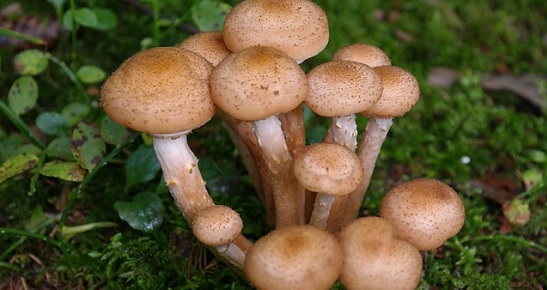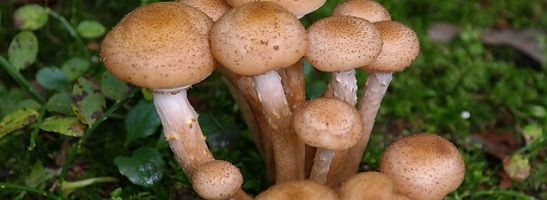
Armillaria fungus (Pixabay/CC0)
One of the largest terrestrial living organisms, an Armillaria ostoyae specimen dubbed the ‘Humongous Fungus’, covers almost 9 kilometres and weighs 544 tonnes. Armillaria fungi live mostly underground, which gives them the needed space to grow to epic proportions. A team of scientists set out to pinpoint the genetic mechanism that allows this fungus group to grow. They sequenced genomes of four Armillaria species (including one similar to the Humongous Fungus). Their findings suggest that the Armillaria species have expanded gene families associated with several pathogenicity-related genes and enzymes that degrade plant tissue. The authors also identify a wide array of genes in rhizomorphs associated with their role of dispersal and colonization of new plants. This research can help slow down the spread of Armillaria rhizomorphs and fight the root-rot caused by the fungi.
Authors:
György Sipos, Arun N. Prasanna, Mathias C. Walter, Eoin O’Connor, Balázs Bálint, Krisztina Krizsán, Brigitta Kiss, Jaqueline Hess, Torda Varga, Jason Slot, Robert Riley, Bettina Bóka, Daniel Rigling, Kerrie Barry, Juna Lee, Sirma Mihaltcheva, Kurt LaButti, Anna Lipzen, Rose Waldron, Nicola M. Moloney, Christoph Sperisen, László Kredics, Csaba Vágvölgyi, Andrea Patrignani, David Fitzpatrick, István Nagy, Sean Doyle, James B. Anderson, Igor V. Grigoriev, Ulrich Güldener, Martin Münsterkötter & László G. Nagy
Corresponding author:
György Sipos, University of Sopron, Sopron, Hungary, Email: gyoergy.sipos@wsl.ch
Canadian author:
James Anderson, Department of Biology, University of Toronto, ON, Email: jb.anderson@utoronto.ca
Original paper published in Nature Ecology & Evolution on October 30, 2017.

